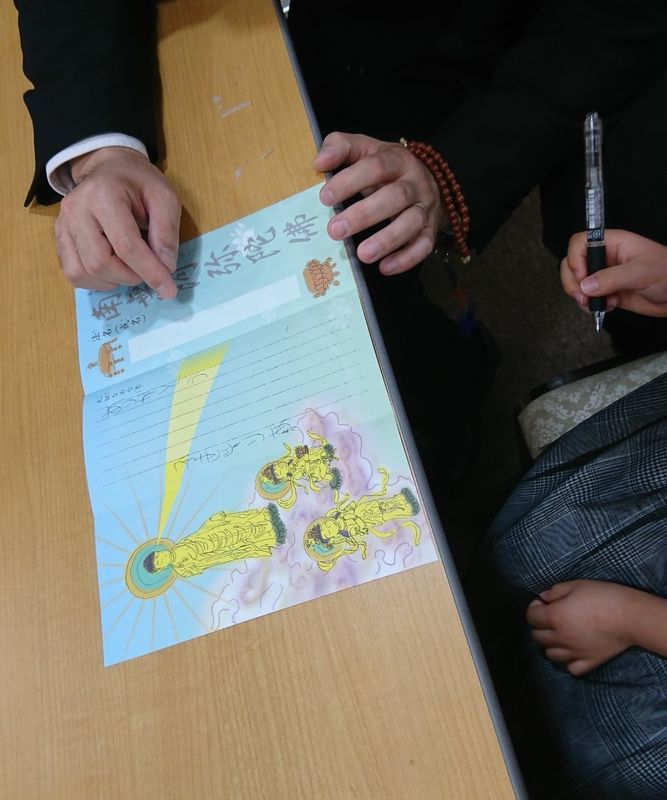Jul 1, 2019
Differing Funeral Experiences in Japan
Funerals can be difficult in any country. Saying goodbye to the recently departed can be really heart breaking, but it is always somehow more difficult with language and cultural barriers in the way.

The sign-in book and thank-you bags, common in most Japanese funerals. You give money in a special envelope and they give you a bag of treats the deceased enjoyed, usually coffee or tea, sometimes a hand-towel or snack. Being the wife of a funeral director, I've seen a few of these.
Having attended two funeral ceremonies in Japan in the last five years, I feel that I have a little bit of a grasp on the situation now. First came my husband's paternal grandmother, who is from a non-religious family and a such had a non-religious funeral, consisting of a flower ceremony in which all attendees, of which there were many, were encouraged to approach the pink satin brocade covered coffin and place within it a flower from a nearby table. After this, there was a reading of letters by the son of the deceased, which I do not know more about due both to my lacking Japanese skill and to my then-two-year-old daughter's interruption. We spent most of that part of the ceremony running around the stairwell. The ceremony ended after another episode of putting flowers on the body and the coffin was sealed, then brought down to the waiting hearse and we all headed to the crematorium.
The situation at the crematorium is the subject of a separate post, so here we will fast forward to the family grave, where the urn is interred alongside others of the same first-son; his wife; their first son; his wife; etc. line.
Recently, my husband's maternal grandfather passed. As he was significantly more religious, he had a proper Buddhist ceremony, which was very different. My mother-in-law showed me how to use Buddhist prayer beads (hook them over the thumbs in times of prayer and over the left wrist otherwise) and I did my best to watch when the others did the move toward prayer, but this was more difficult than I had planned as the ceremony was family only and my mother-in-law is an only child. My husband and his mother did not always agree on the timing, but I followed them the best I could.
The ceremony itself was more complicated, with a monk in ornate ceremonial robes chanting players for the deceased at both the wake (a shorter ceremony the night before the big event) and the funeral itself. Instead of flowers, we approached the front alter and took pinches of granulates incense, putting them on a small hot stone before going back to our seats, bowing to the monk both before and after.
My daughter writing a letter to her great grandpa at his funeral.
Letters to the deceased are placed in the coffin along with numerous flowers, the last of which is placed by the monk, who says a final prayer before the coffin is sealed and wheeled down to the hearse.
We then went to the crematorium, where our departing message to the deceased was met with a more formal prayer than my previous experience. Then the monk departed.
After the urn is sealed, it is placed in a highly decorative box and brought to its proper place. That place might be a family grave, like my grandmother-in-law, or a home shrine in many cases. My grandfather-in-law instead was interred at a Buddhist temple closer to his hometown further south a few days after his services.



1 Comment
edthethe
on Jul 4
thank you for this peek at something most people are uncomfortable to share.